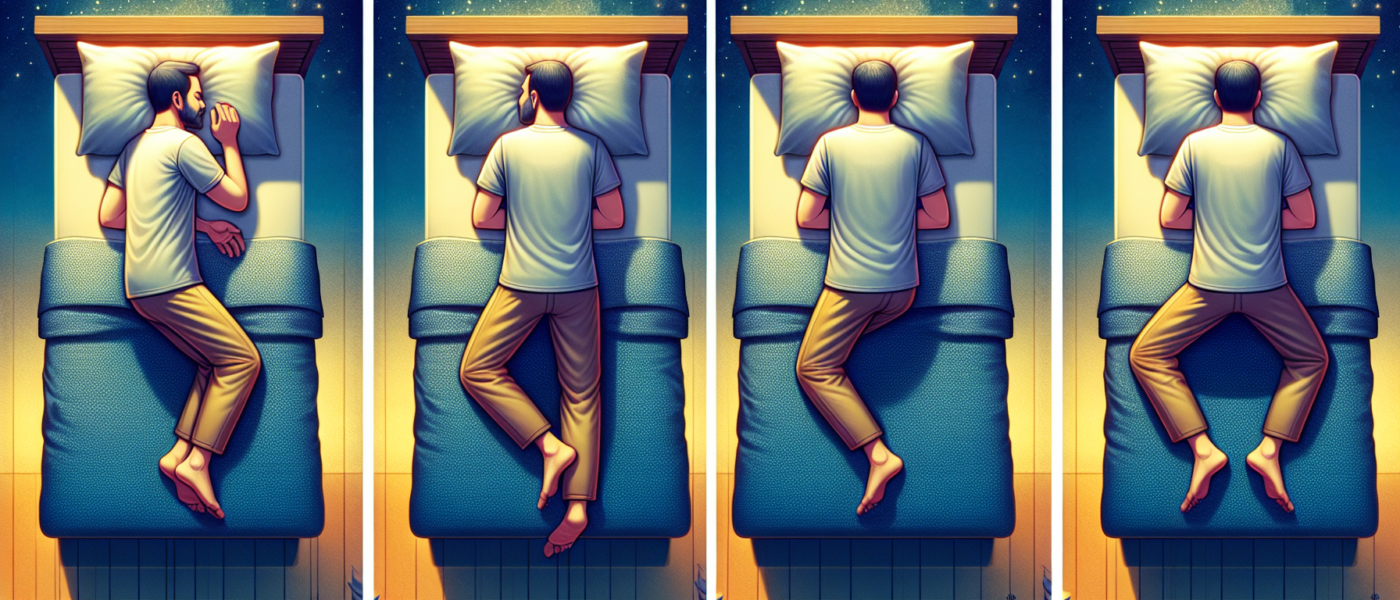Best Sleep Positions for Men 50+ to Reduce Back Pain
Key Takeaways
As men age, particularly after 50, back pain can become more prevalent. Adopting proper sleep positions can significantly alleviate back pain and enhance overall sleep quality. By choosing the right mattress and pillows, and being mindful of body alignment, older men can achieve better rest and reduce discomfort.
Understanding the Causes of Back Pain
Back pain in men over the age of 50 is often multifactorial, stemming from age-related degenerative changes, such as arthritis, disc degeneration, and muscle weakness. Other contributors include poor posture, lack of physical activity, and previous injuries. Correcting sleep posture can provide critical relief and support for the aging spine.
The Importance of Proper Sleep Posture
Chronic back pain can be exacerbated by the way one sleeps. Misalignment during sleep can put undue pressure on the spine, muscles, and joints. Ensuring that the spine retains its natural curvature and aligns properly helps mitigate pain. Below, we explore several optimal sleep positions for men over 50 to facilitate better spinal alignment and reduce back pain.
1. The Side Sleeping Position
Why It’s Beneficial: Sleeping on the side is widely recommended for individuals with back pain. This position helps maintain the natural curve of the spine, reduces pressure on the lower back, and can relieve discomfort. Moreover, side sleeping is versatile; it can help mitigate issues like sleep apnea and acid reflux, which are common in older adults.
Guidelines:
- Keep a pillow between the knees: Placing a small pillow between the knees aligns the pelvis, hips, and spine, reducing strain on the lower back.
- Choose the right mattress: A medium-firm mattress supports the body while preserving spinal alignment.
- Use a supportive pillow for the head: Ensure that the pillow adequately supports the neck and head, maintaining even alignment with the spine.
2. The Fetal Position
Why It’s Beneficial: The fetal position, a variation of side sleeping where the body is curled with knees drawn towards the chest, can provide significant relief for men with herniated discs. This position opens up the spaces between vertebrae, minimizing pressure on the discs.
Guidelines:
- Keep it loose: Avoid tucking too tightly to prevent restriction of breathing and tension on the back.
- Pair with a body pillow: Hugging a body pillow can provide additional support and comfort.
3. The Back Sleeping (Supine) Position
Why It’s Beneficial: Sleeping on one’s back is often recommended for spinal alignment. This position distributes weight evenly and prevents unnatural bending of the spine. It’s particularly beneficial for alleviating lower back pain.
Guidelines:
- Use a pillow under the knees: Placing a pillow under the knees maintains the spine’s natural curve, reducing lower back stress.
- Ensure neck support: Use a flat pillow or a rolled towel beneath the cervical spine to support the neck.
- Keep the head neutral: Avoid using overly thick pillows that elevate the head excessively, which can misalign the spine.
4. The Reclining Position
Why It’s Beneficial: For men who suffer from isthmic spondylolisthesis, reclining can provide comfort. This position supports the back and reduces strain by creating an angle between the trunk and thighs, minimizing the tension on the spine.
Guidelines:
- Invest in an adjustable bed or recliner: These setups allow for customization of the sleeping angle for optimal comfort.
- Use pillows wisely: Additional pillows can support the lower back and legs, maintaining the desired angle and reducing strain.
5. The Stomach Sleeping (Prone) Position
Why It’s Beneficial: Although generally not recommended due to its potential to misalign the spine, stomach sleeping can be beneficial for men with certain conditions, such as degenerative disc disease. Lying on the stomach may help relieve pressure on the disc spaces.
Guidelines:
- Use a thin or no pillow: This reduces strain on the neck and keeps the spine in a more neutral position.
- Place a pillow under the abdomen: Supporting the midsection with a pillow helps maintain spinal alignment.
Tips for Enhancing Sleep Quality and Reducing Back Pain
In addition to optimizing sleeping positions, several other considerations should be kept in mind to enhance sleep quality and reduce back pain.
Mattress Maintenance: Ensure that the mattress provides adequate support and is not sagging. Older mattresses should be replaced approximately every 7-10 years.
Pillow Selection: Experiment with different types of pillows to find one that best supports the neck and head, depending on the chosen sleep position.
Regular Exercise: Core-strengthening exercises can support the spine and reduce back pain. Consult a healthcare professional before starting a new exercise regimen.
Maintain a Healthy Weight: Excess weight can put additional strain on the back. A balanced diet and regular exercise can help maintain a healthy weight.
Practice Good Sleep Hygiene: Develop a regular sleep schedule, create a comfortable sleep environment, and avoid caffeine and heavy meals before bedtime.
Conclusion
The right sleep position can make a significant difference in managing back pain for men over 50. By paying attention to body alignment and comfort in various sleep positions, individuals can reduce strain on the spine and enhance their overall sleep quality. Combining these practices with a supportive mattress and pillows, regular exercise, and healthy lifestyle choices will further contribute to back pain relief and improved well-being.

